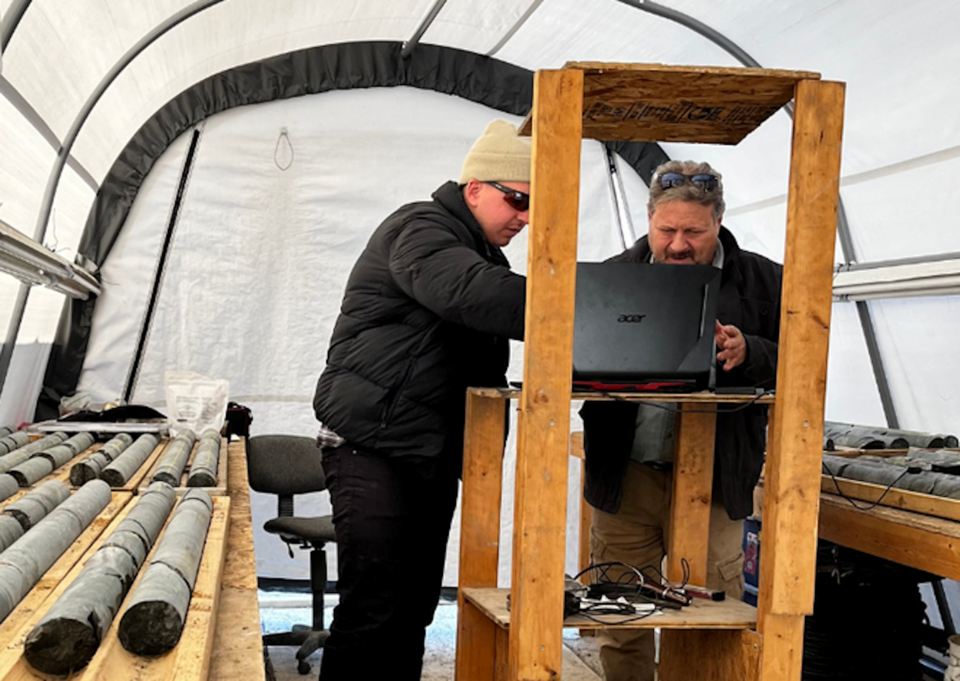The Drift is an ongoing editorial series by Northern Ontario Business about the people, companies, projects, technologies, and innovation that encompass the mining industry in northeastern Ontario.
The company that once hawked its River Valley project, east of Sudbury, as the “largest undeveloped primary PGM resource in North America” has come back with a revised mine plan.
Inflation and a number of other uncertainties forced New Age Metals to go back to the drawing board last spring to sketch out new plans for a potential platinum group metals mine in the West Nipissing-Sturgeon Falls area.
In a preliminary economic assessment (PEA) released last week, New Age is proposing a smaller scale mining operation, targeting higher grade platinum group metals on its 15,800-acre property. They also plan to shrink the scale of the operation to reduce the environmental footprint.
The River Valley site is 60 kilometres east of Sudbury, 100 kilometres by road, and just north of the rural community of Field.
The property has been heavily explored for platinum and palladium for decades. New Age (formerly known as North West Capital) picked up the ground in 1998.
Four years ago, New Age issued a PEA of River Valley outlining a district-sized mining and processing complex with a 14-year mine life from a 3.95-million-ounce resource. An estimated 325 jobs would be created.
A PEA is a first draft technical and economic study of what a mine could look like.
The plan back then was for River Valley to be huge-tonnage, low-grade operation with a spread out series of pit that would be mined in sequence across the property.
Upon reflection of the current economic times, management decided the River Valley plan wouldn’t hold up to scrutiny and backed off on proceeding with a next-stage prefeasibility study, reverting back to carrying out an updated PEA.
This latest version is more compact with the focus on pursuing high-grade resources with both pit and underground mining possibilities.
The area for the mine site would be almost 39 square kilometres, down from the 126 kilometres outlined in the June 2019 PEA.
Instead of putting 14 pits into production, New Age is looking at just five with two underground portals.
The 119,000 ounces of a palladium production a year suggested in 2019 has been reduced to 47,400 ounces. The processing plant head grade is tabbed at 1.19 grams per tonne.
The budget to build the mine is $268.7 million, down from the $495 million once outlined four years ago.
The estimated mine life gets a bump from the original 14 years to 16.
New Age is promising better metal recoveries and an increase in mineral resources once drilling in the second half of this year is completed, if they can raise sufficient funds to run a drill program.
The current site plan proposal also calls for a 6,850-tonne-per-day processing plant, a low-grade stockpile, waste rock storage facilities, tailings storage facility along with all the mining-related site infrastructure.
No timelines were released showing a path to production.
“Compared to the 2019 PEA, this 2023 PEA envisions a smaller, higher-grade operation with lower CAPEX, expanded underground mining and reduced open pit mining, and a much-smaller environmental footprint,” said company Chair-CEO Harry Barr in a statement.
The upcoming drill program will convert inferred resources to indicated, meaning the drill holes are spaced more closely to improve the confidence in the size, grade and location of the resource below ground. There are also some new mineralized zones New Age would like to explore.
The current rage of New Age is out in Manitoba where it’s undertaking a summer drilling program to prove up a lithium property there.
The new PEA shows River Valley isn’t necessary on the back burner, although New Age has said in the past that it would entertain a larger mining company showing interest in River Valley at some point. New Age bills itself as a ‘project generator,’ meaning their objectives are to eventually option out its properties to a major miner to advance into production.




